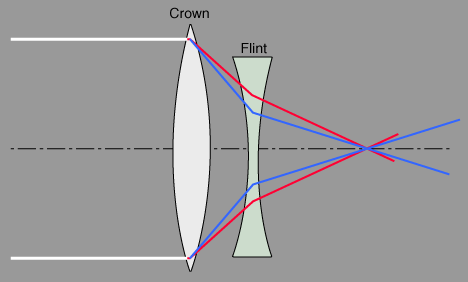Achromat Doublets
An achromat doublet does not completely eliminate chromatic aberration, but can eliminate it for two colors, say red and blue. The idea is to use a lens pair with the strongest lens of low dispersion coupled with a weaker one of high dispersion calculated to match the focal lengths for two chosen wavelengths. Cemented doublets of this type are a mainstay of lens design.
Another approach to chromatic aberration reduction is to use two positive lenses separated by one half the sum of their wavelengths. Two equal positive lenses are used in eyepieces like the Ramsden eyepiece for correction.
Chromatic aberration for three colors can be eliminated with and apochromat triplet.
|


